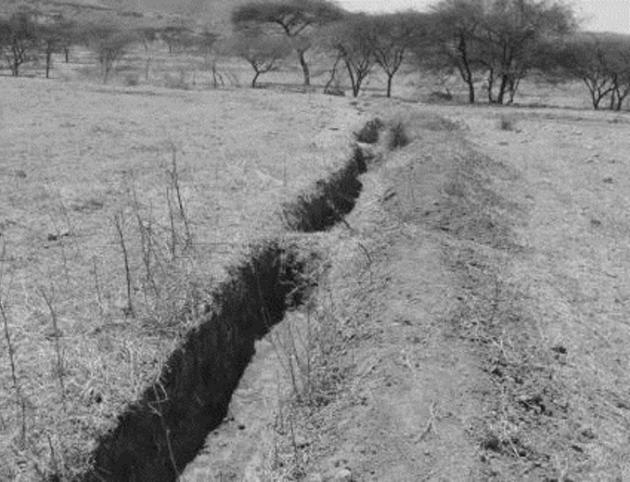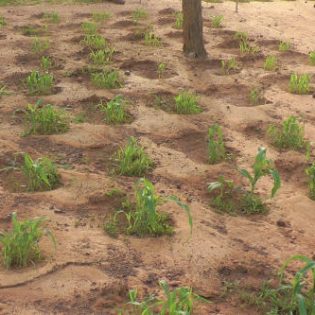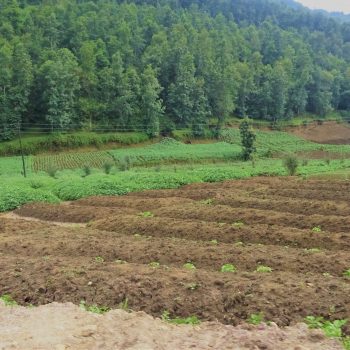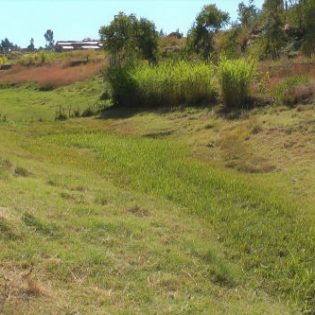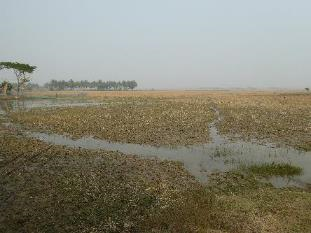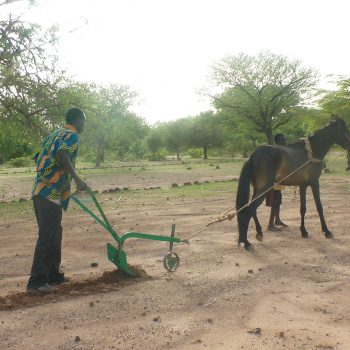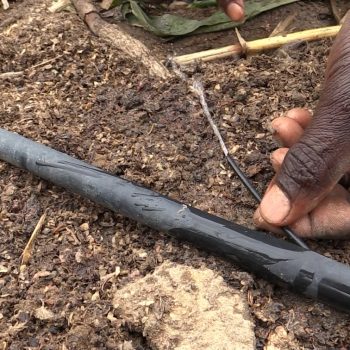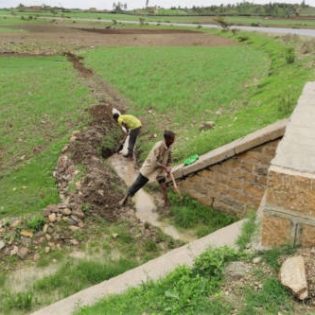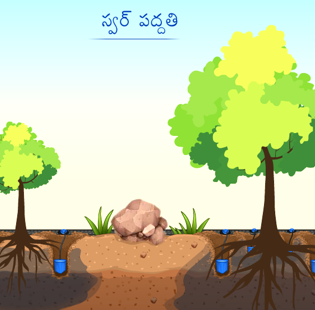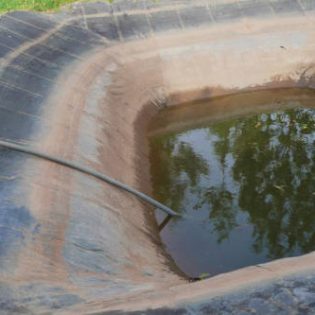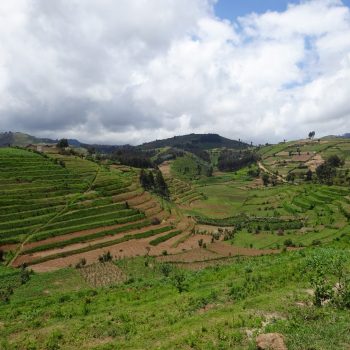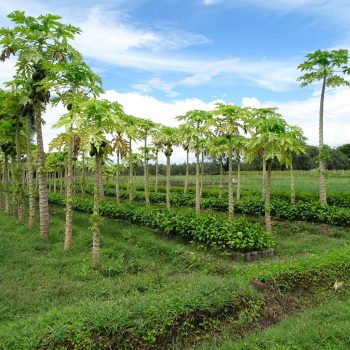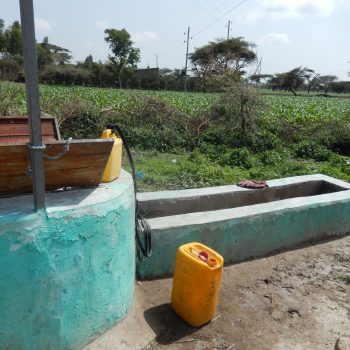Trenches are excavations (approximately 1 meter deep) constructed along the contours to collect and store rainfall water. Due to their higher storage capacity than bunds, trenches can withstand more increased water flow and are less prone to breakage. For this reason, they are often preferred when the slopes are steeper. The trenches are commonly segmented to ensure that water is homogeneously distributed across the structures dug on a contour. This rainwater harvesting system enhances soil moisture levels and increases water availability for a prolonged time after the rainy season. Kaushal et al. (2021) found 16% higher soil moisture levels than on a site without trenches.
Swales are wide channels with a gentle cross-section used to either retain water in the landscape or gently discharge excess water while allowing a portion to seep into the ground. They are often kept with a grass cover, and if water is allowed to flow to a discharge outlet, small check dams may be built inside it (Ekka et al., 2021). By increasing the soil moisture levels, swales and trenches moderate local climatic temperatures, as described previously.
Additional information
| Agriculture | Rainfed (Crop) |
|---|
